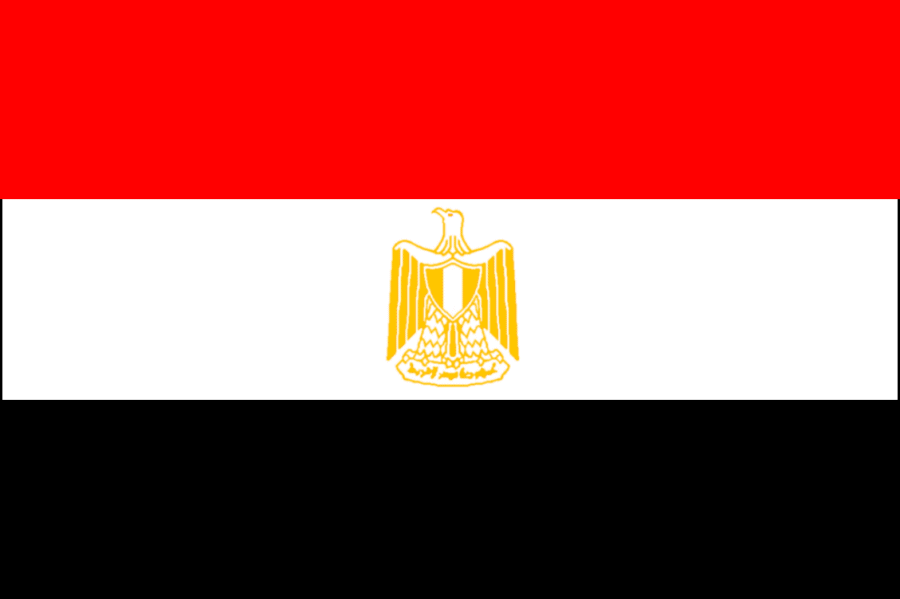EGYPT: Tunisia was only the beginning, the flames of revolution spread outwards extending the tendrils of liberation across the landscape of North Africa. The media followed like dogs on the trail of a potential treat and landed in the country of Egypt. The attention given to Egypt was extreme and it demonstrated that through organized direct action a movement can be nourished and grown into a flower of revolt.
The protests themselves were sparked by the events in Tunisia, as the populace eagerly watched the old regime crumble under the weight of the angered people. Inspired, the Egyptians began taking to the streets in the thousands and on January 25, the protests began to come to a head.
The people were frustrated over common themes: poverty, unemployment, corruption, and the autocratic rulings imposed by President Hosni Mubarak.
Mubarak himself was never a stranger to politics, having taken the reigns of leadership after the old President, Anwar Sadat, was assassinated in the year 1981. Continuing the nation’s “Emergency Law,” which is essentially martial law imposed indefinitely, Mubarak had complete and utter dominance, an overpowering sheet of control that smothered the people. With institutions like imprisonment without trial for a length decided by the government, oppression was nothing new to the Egyptian people. Many early protests were focused on issues like police brutality, the lack of free elections, and the slandering of freedom of speech.
The arm of Mubarak stretched to his plainclothes police which have committed numerous acts of brutality against individuals. Reported by the Egyptian Organization for Human Rights they, “…had documented 567 cases of torture in police custody since 1993, 167 of which resulted in death.”
Mubarak has also issued restrictions on media, the most famous of which was the Internet blackout hours before a large scale scheduled protest. This was a key plot to disrupt the demonstrations as many Egyptian protests were organized using websites like Facebook and Twitter.
January was a bloody month. Two days after the Internet blackout protestors took to the streets in what was called “The Friday of Anger.” On January 28 hundreds of thousands of protestors joined together once more in the city of Cairo with solidarity actions arising all across Egypt. Under the orders of the Minister of Interior Habib El Adly, prisons were opened and burned to the ground as the inmates were purposely set free. It was an attempt to scare the protestors into submission, a plan which backfired as the police withdrew from the streets. Reports of looting were numerous and the military soon was deployed in order to aid a now disorientated and broken police action at restoring order.
The following day saw a curfew launched into effect, the military still keeping a strong presence in Cairo. However, the army refused direct orders to use live rounds on demonstrators and stood their ground as mere spectators to the events unfolding around them. No major causalities were reported over these days, just running street violence between the government and revolutionary forces.
The protestors began to fortify themselves in the now famous Tahrir Square and on February 2 one of the most infamous clashes of the entire revolution commenced. Mubarak extremists rode in on camels and horses armed with a variety of weapons which crashed through the ranks of the demonstrators who responded in turn with a vengeance. Decades of oppression and injustice fueled their defense and hundreds were killed in the brutal street fighting. Violence escalated all throughout the day; the destruction was immense. The military desperately tried to keep order, doing their best to separate the two sides and keeping a neutral standpoint; however, the fighting had already solidified itself, the hatred to strong to merely keep a small gap of division.
Journalists and reporters were assaulted as many began to speculate that Mubarak was orchestrating the fighting as a way to halt the protests in their tracks and make claims that the revolutionaries were inherently violent rioters.
Stubborn like all corrupt leaders, Mubarak refused to resign from office even despite this fierce opposition. As the military, backed by volunteers, began to protect important monuments and museums, protests raged onwards crashing through government buildings and city streets.
An amazing display of religious tolerance was shown on February 6 when Egyptian Christians began a mass where Mubarak supporters were eagerly looking for a fight. Egyptian Muslims, however, formed a ring of protection to allow the Christians to worship in whatever peace they could manage and Tahrir Square became a solemn ground, the revolution showing a softer side.
As Mubarak announced he would delegate some power to his Vice President Omar Suleiman, the response from the people was critical. Demonstrations, inflamed by this act of arrogance rose and thousands more joined the already massive movement. The message had never been clearer: Mubarak must go.
The bloodied weeks of fighting, pain, and strife were not in vain, and on February 11 Hosni Mubarak officially resigned. Suleiman transferred all remaining power to the Supreme Council of the Egyptian Armed Forces. Shortly after, Parliament and the Constitution of Egypt were dissolved, the Council declaring that it would hold power for six months or until the soonest elections could be held.
The major protests began to quiet down and Tahrir Square was cleaned by groups of demonstrators; however, the core protestors said that their actions would not stop until all demands were met and followed upon.
Political struggle continued and on March 5, various buildings controlled by the State Security Intelligence (SSI) were raided. The protestors went to seek documents that they believed showed crimes committed by the SSI against the people when Mubarak still had control over the country.
Evidence such as mass survelliance, vote rigging, and rooms full of classified documents and tapes. Holding cells were passed that some activists recalled with a dreaded chill, remembering and reflecting on the days of torture and time they spent within their barren walls.
As of late, the troubles in Egypt have not subsided. The Egyptian Cabinet on March 23 created a new law that was reminiscient of the days under Mubarak. All protests and strikes have now become a criminal offense, with anyone who organizes, takes part in, or calls for a demonstration to be imprisoned and/or fined a grand total of 500,000 Egyptian pounds, that’s around 100,000 in U.S. dollars.
Civil disobediance now still rages on as counter movements have sprung up to combat this new attempt at social control. Egypt at this point in time is a test to see if a continued systematic revolt across multiple nations can be successful. The fight is no where near over, the remnants of the old regime still hold onto their power; however, it is moving more and more towards a democratic victory. There are still many worries that are being felt, though the military has announced they will not have a candidate run for office in the new elections there is still the fear that they will seize power for themselves.
The Egyptian activists are not ones to give up the struggle lightly. The tactics and sheer organization that went into the demonstrations was a testament to the experience and maturity these protestors have shown. With such a success of a revolution the balance of this success sways to that of the activists, but revolution is not something that is normally static – by its very nature the movement must be sporadic to adapt to the actions of outside forces.
As more and more of the African and Arabic world mobilizes against oppression, Egypt will always carry a heavy weight as it was the real turning point in the entire movement. Tunisia was the starting flame that flickered and burned, Egypt was the beacon that flashed brightly in the international eye. Success hinders only on the continued discipline that the demonstrates have shown, if they can remain consistent and unflinching in the face of potential strife ahead then it is without any doubt they will achieve what they have fought so passionately for. The months ahead will serve as an important piece in this revolution. The gritty fighting is over, the real test of revolutionary success begins. Now the people face the ultimate task of transferring their rage and love into creating a new Egypt that will transcend into the fields of liberation that they so dearly envisioned.


